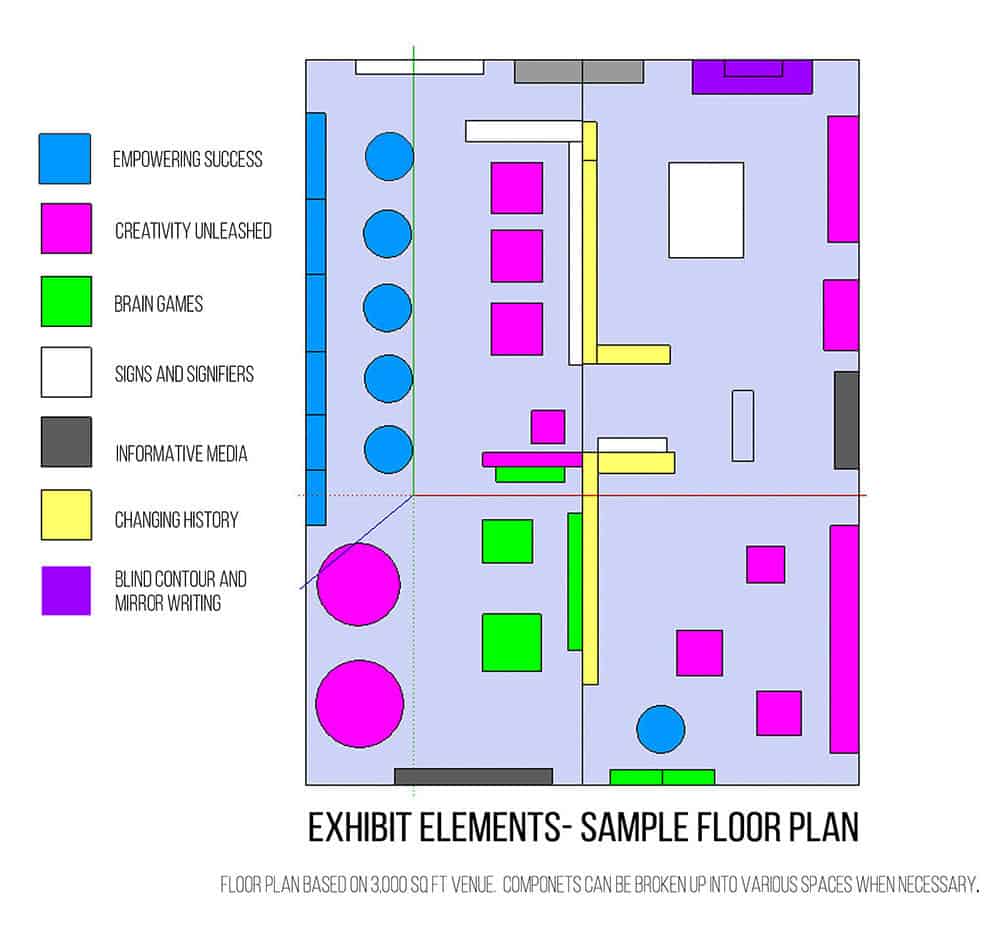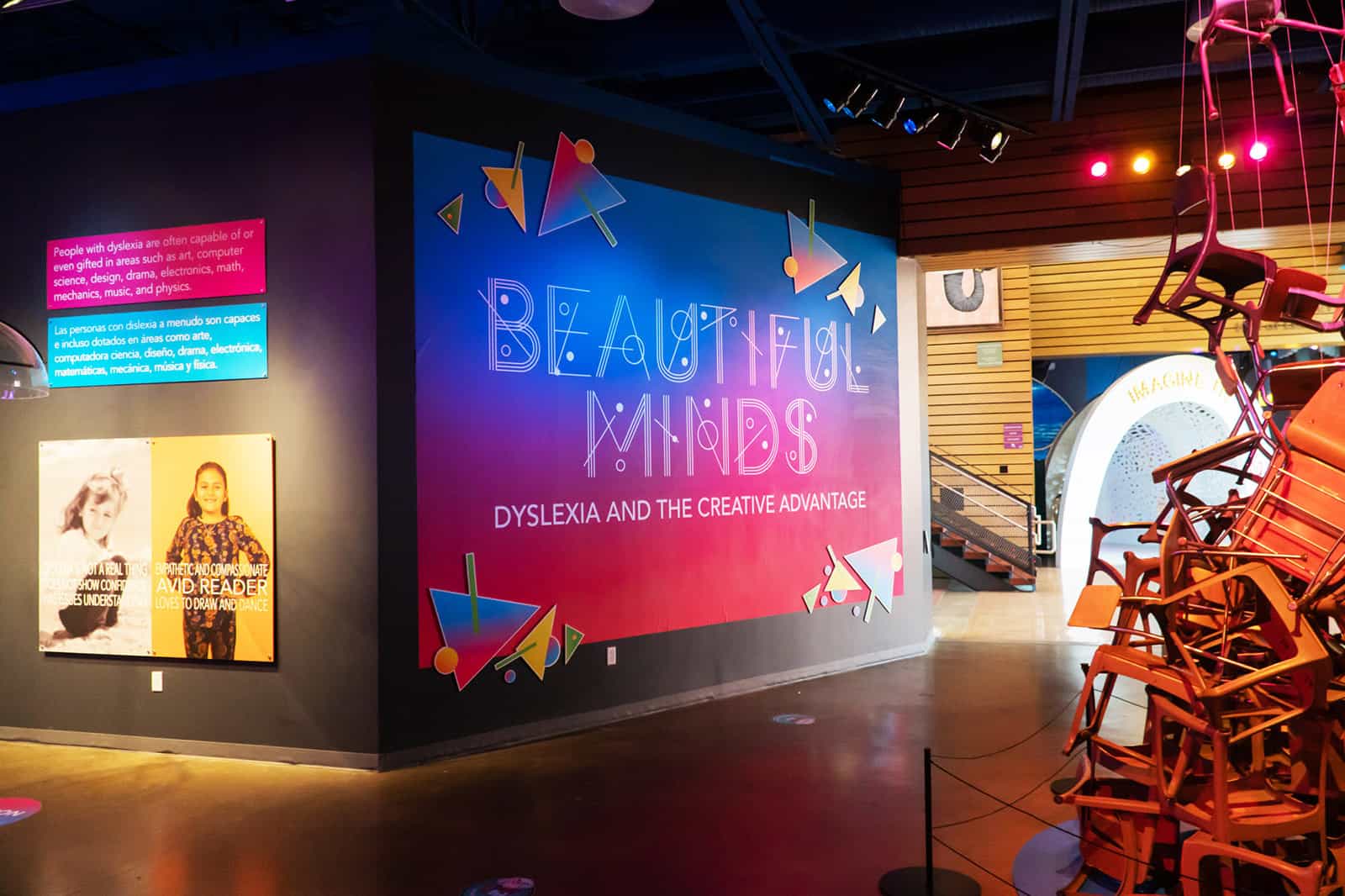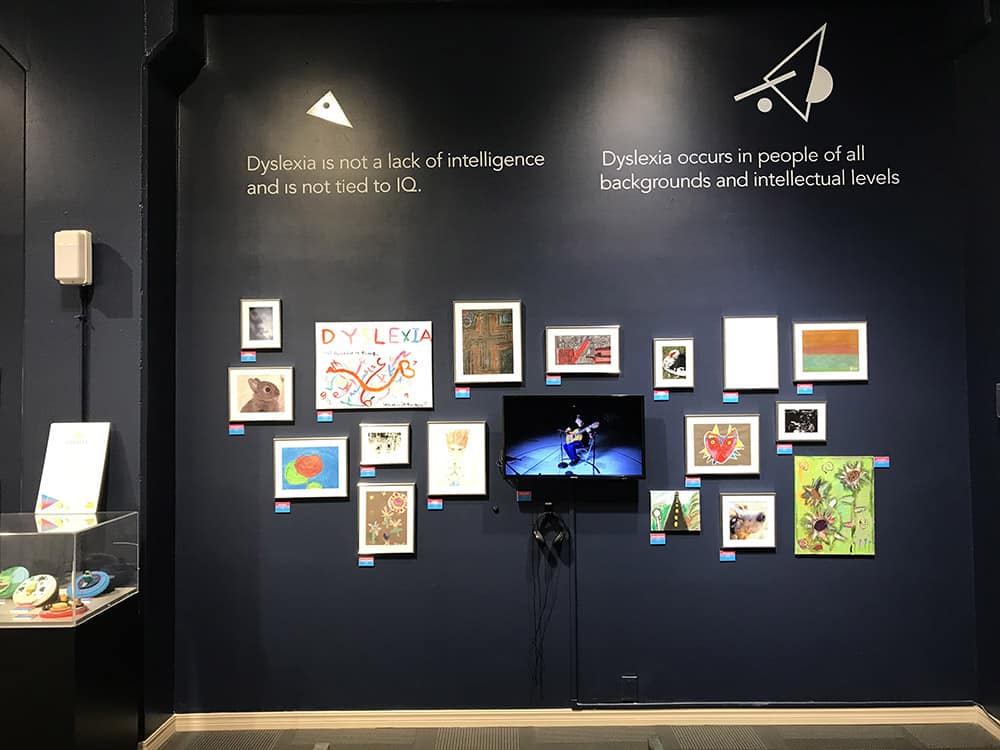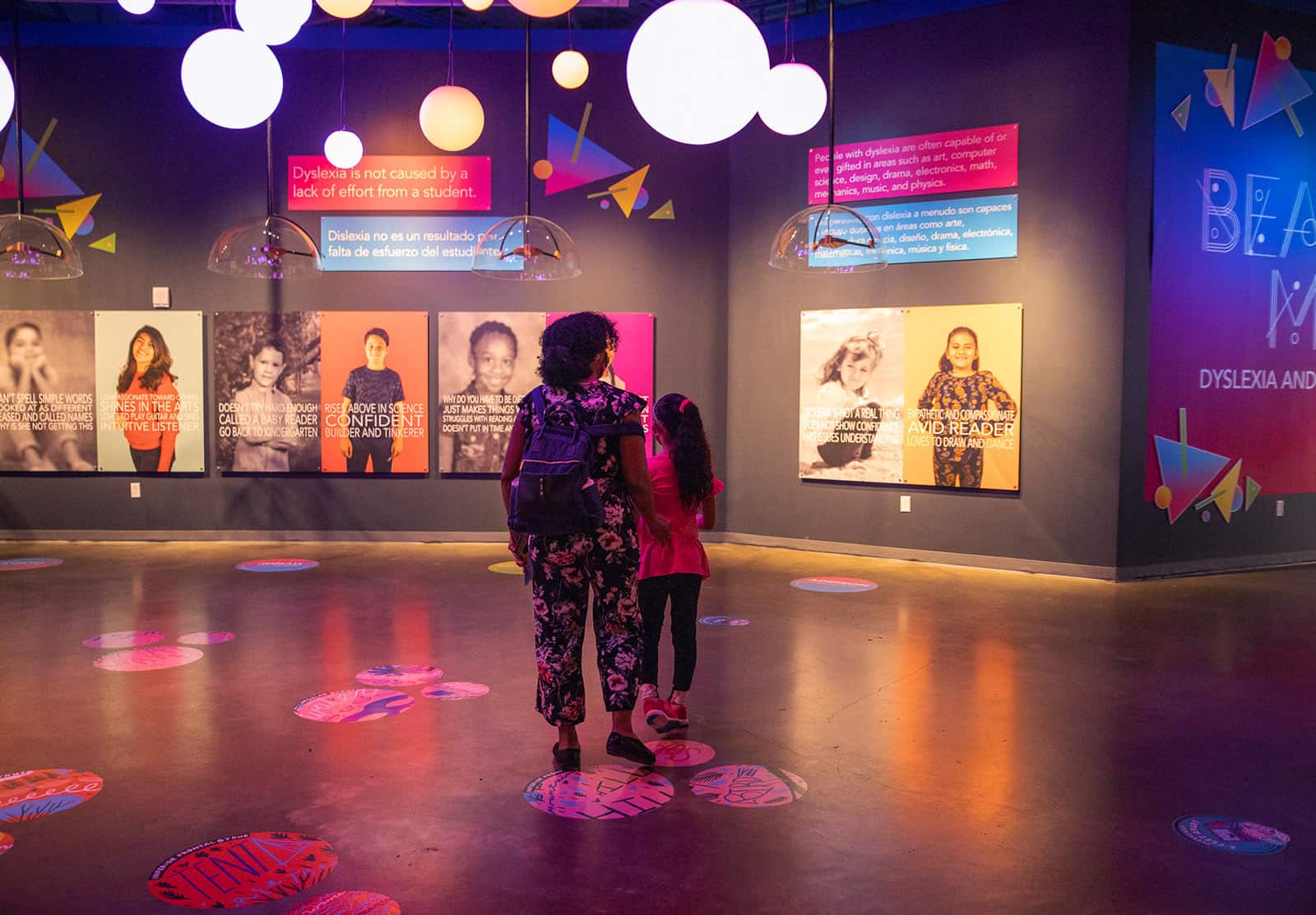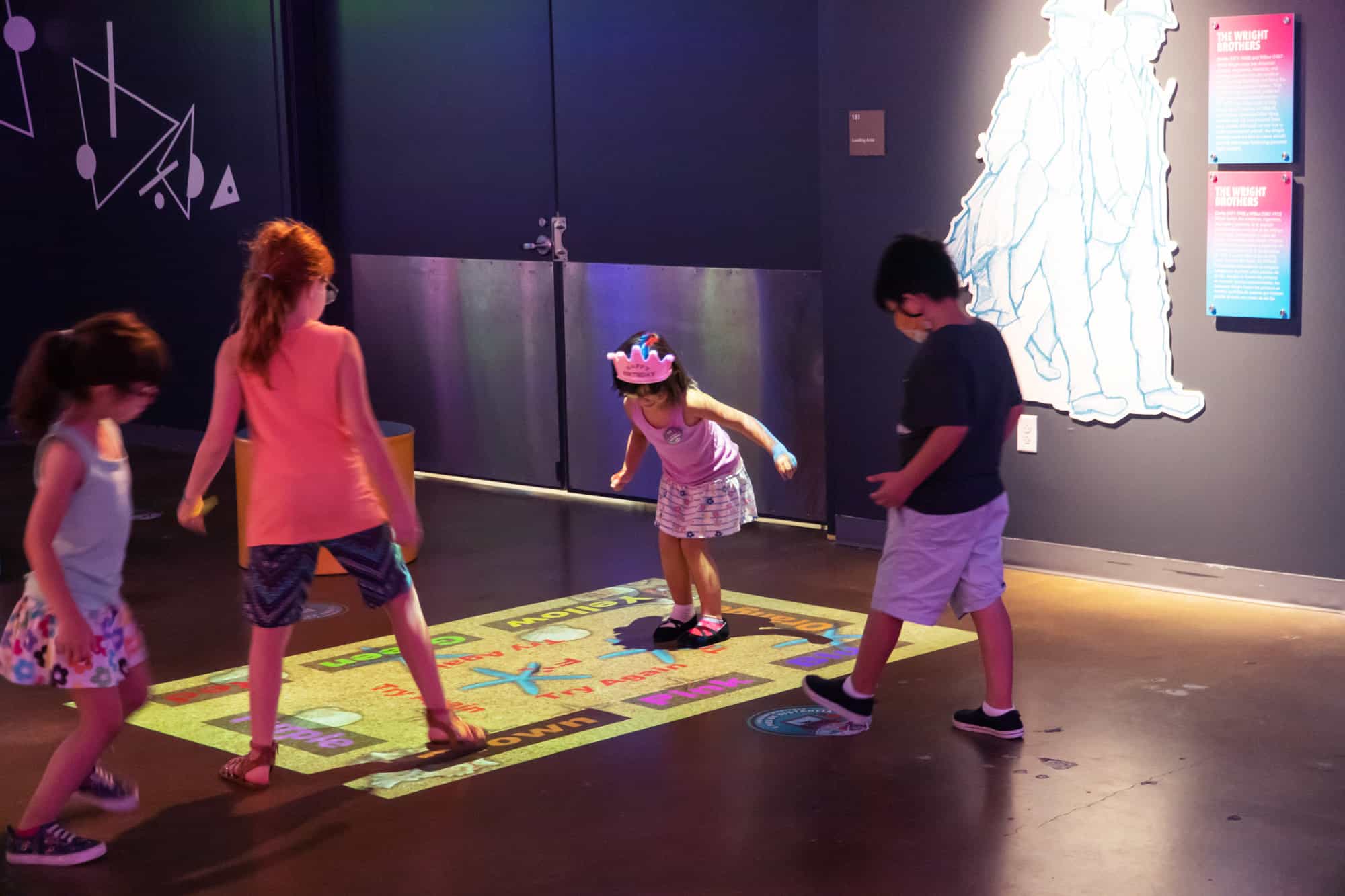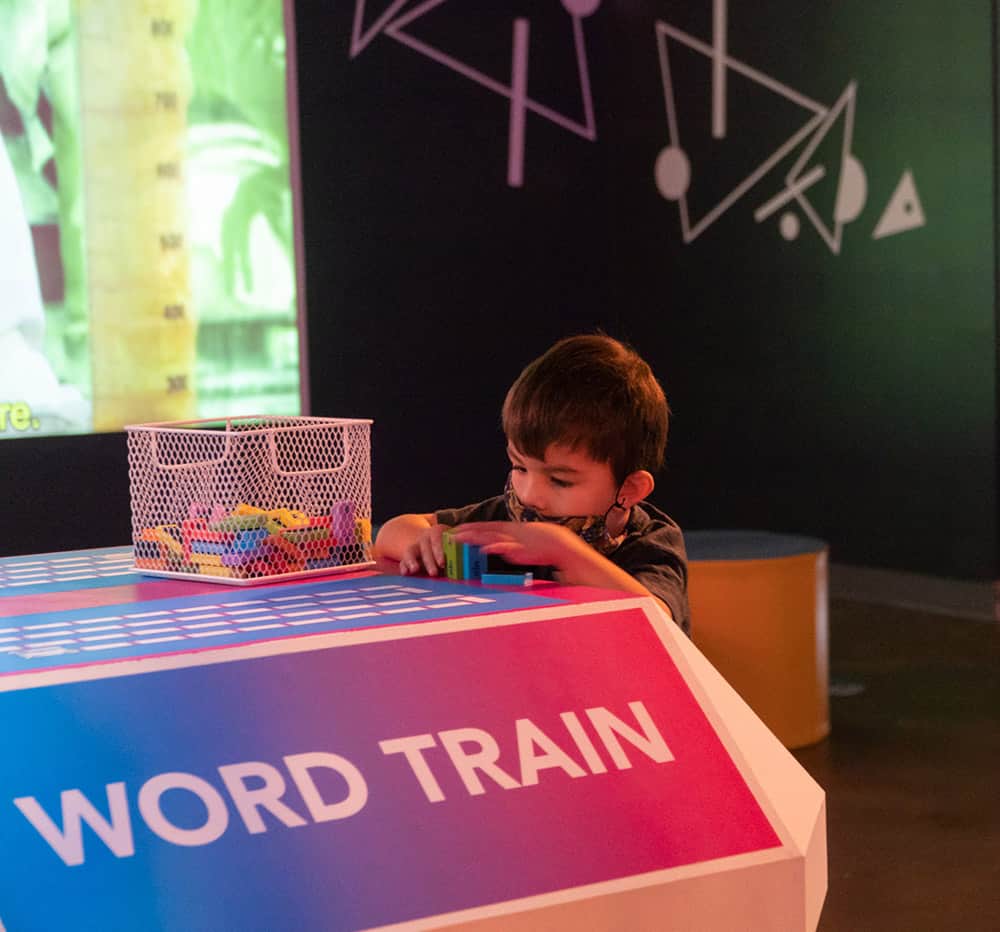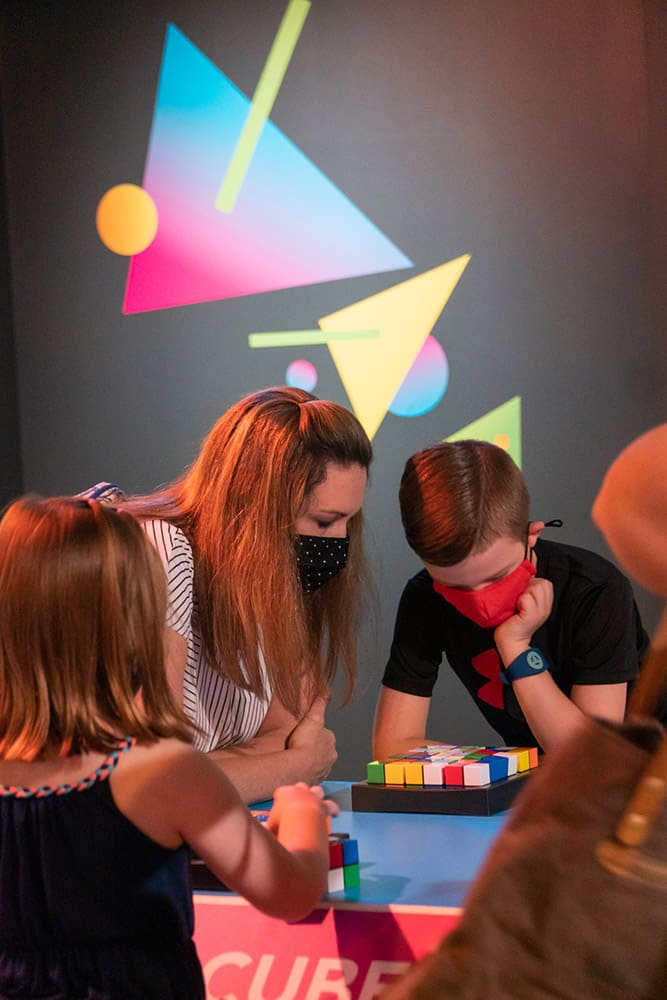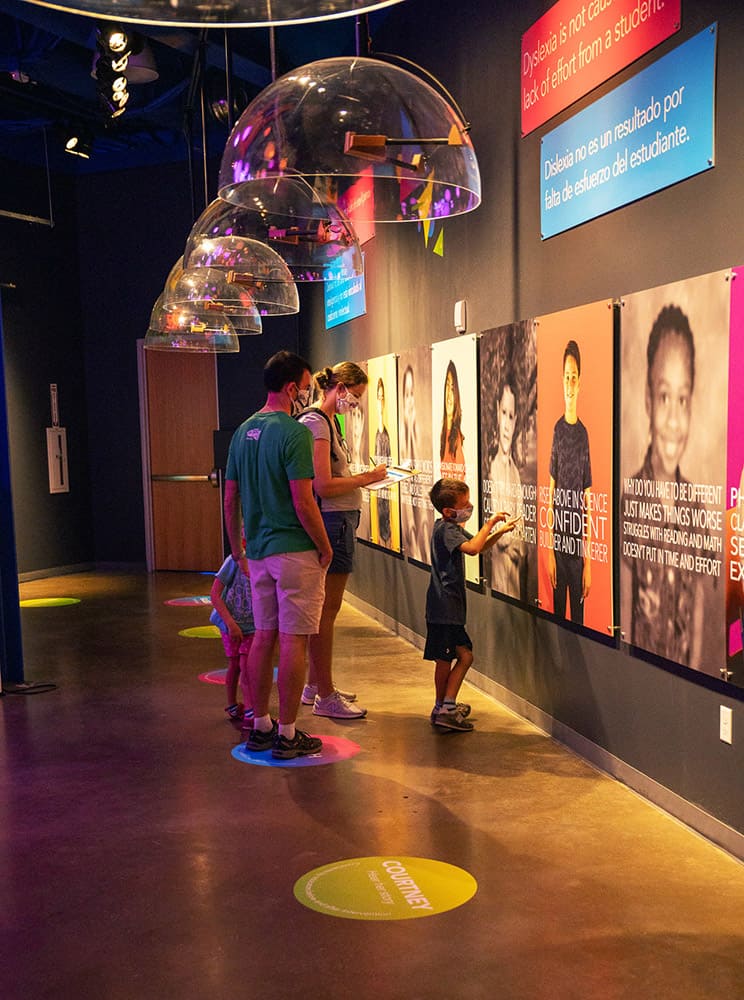beautiful minds
dyslexia and the creative advantage
Dyslexia affects as much as 20% of the world’s population and often goes undiagnosed. Although dyslexia is labeled as a learning disability, it can also be seen as a different way of thinking because it changes the way millions of people read and process information.
In Beautiful Minds: Dyslexia and the Creative Advantage explore the successes of those who think and thought outside the box when faced with the challenges of dyslexia and learn about some of the tools and resources for diagnosis and pathways to success.
Research has proven that people with dyslexia are often highly visual and able to quickly process and integrate visual and spatial information. History has proven that dyslexic thinkers have made world-changing accomplishments because of their ability to problem-solve in alternative ways with heightened creative skills.
Join us as we celebrate the accomplishments of dyslexic thinkers in history – from Leonardo da Vinci to Albert Einstein to Agatha Christie, Andy Warhol and Steve Jobs- alongside present-day students and artists.
empowering success
The exhibit includes a sound and visual experience where guests can listen to stories told by children about their experiences growing up with dyslexia before and after intervention.
creativity unleashed
View artwork created by successful living artists and students with dyslexia. This is an important element for community involvement to help empower and celebrate those who share this learning difference.
changing history
Walk amongst the life-size illustrations of some of the most influential visionaries who have changed the course of history. From da Vinci to Steve Jobs, this section is eye-opening educational experience comprised of historic dyslexic role models.
brain games
Play a giant scrabble game, color sudoku, rhyming bingo and other spatial and word games. The process of learning can be aided by stimulating visual memory and repetition. Games offer a means to achieving this while retaining an element of fun.
blind contour selfies
and mirror writing
Get a hands-on approach to mirror writing and blind contour drawing on a life size acrylic canvas. Learn how the left and right sides of the brain and are engaged. Find out what side of the brain is more prominent with you.
signs and signifiers
Learn about what dyslexia really is and the truth behind some of the negative myths that are perpetuated in society. Learn how to identify dyslexia and find the resources you need for help and intervention. Experience what it is like to have dyslexia through a hands-on, sensory approach with several simulation stations.
Size
Recommended for spaces containing 2,000 to 4,000 sq feet. Modular components can be broken up into smaller halls, when necessary. For two large hanging installations and sound domes a ceiling height of 10′ or more is required.
venue period
12 weeks minimum.
security
Standard.
shipping
One way inbound, paid by host venue.
support
Exhibit technician oversees installation and takedown. Marketing and print kit plus educational materials are available. Art collection to be handled by trained curatorial and or exhibit staff.
REntal Fee
12 – week minimum $35,000 – with price adjustments for longer leases.
appropriate for
Science centers, Natural history museums, Art museums, and Cultural Institutions.
step 1 - contact whiteboard exhibits
To obtain tour schedule, pricing details, booking request, and additional information please contact Whiteboard.
Step 2 - Hold the date
With a small deposit, Whiteboard will hold your requested dates for up to 30 days prior to the official contract agreement.
Step 3 – Floor plan and facilities report
Whiteboard will need to determine that your institution meets all the exhibit requirements. Our staff can help with any modifications that might be needed based on the exhibit space floor plans and security.
Step 4 - contract
Once the dates, and facilities report have been approved, a contract will be issued. The responsible parties must sign and return the original contract. Once the contract has been finalized an exhibit manual, press release and media packet will be issued. This will be mailed out within the agreed-upon terms leading up to the exhibition’s opening date
Step 5 - Evaluation
After the exhibition, a final evaluation is requested to help Whiteboard determine the exhibitions success and how to improve in areas that will make the exhibit more enjoyable for everyone.
